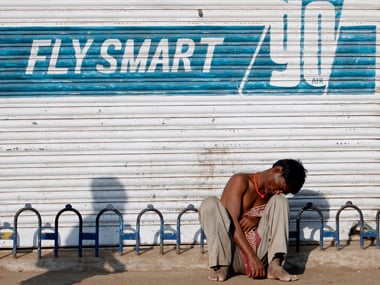50 lakh people lost jobs since demonetisation in 2016, reveals latest report on job crisis; unemployment rate rose to over 6% in 2018 [FirstPost]
India FP Staff Apr 17, 2019 13:27:03 IST
Months after a leaked report on unemployment by the National Sample Survey Office (NSSO) created furore, with the Opposition calling it a "national disaster" and the Centre taking recuse by dubbing it a "draft report", a fresh study conducted by the Centre for Sustainable Employment (CSE) at Azim Premji University has reiterated that job loss has been steadily rising in the past decade, hitting its worst levels after 2016.
The CSE report — State of Working India 2019 — revealed that 50 lakh men lost their jobs between 2016 and 2018, and the beginning of the decline of jobs coincided with demonetisation in November 2016. However, the report adds that "no direct causal relationship can be established based only on these trends".
The report on the nation's labour market is based on data from the Consumer Pyramids Survey of the Centre for Monitoring the Indian Economy (CMIE-CPDX). CMIE is an independent economic think tank headquartered in Mumbai. The university's study draws from this CMIE survey of about 1,60,000 households conducted every four months.
The NSSO's periodic labour force survey (PLFS) had shown that unemployment was last this high in 1972-73, and that the joblessness rate was 2.2 percent in 2011-12.
NITI Aayog vice-chairman Rajiv Kumar had debunked the claims of jobless growth in this report, saying it was incorrect to compare the PLFS data with earlier NSSO reports as their methodologies different.
Now, the CSE report tells us that both the PLFS and the CMIE-CPDX studies show that the overall unemployment rate was around 6 percent in 2018, "double of what it was in the decade from 2000 to 2011".
Perhaps the bigger cause of concern is the higher rate of joblessness among the youth, especially in the age group of 20 to 24 years. Among young urban women, the report reveals, graduates only account for 10 percent of the working age population. Likewise, for urban men, this age group accounts for 13.5 percent of the working age population.
The release of the CSE report during the Lok Sabha election is likely to give the Opposition further ammunition to target the Narendra Modi-led government at the Centre over issues concerning the job crisis in India.
Speaking at a News18 event in 2018, Nobel-winning American economist Paul Krugman had warned that India could end up with mass unemployment if it does not grow its manufacturing sector.
Moreover, in an email interview to Firstpost, Craig Jeffrey, director of the Australia India Institute in Melbourne, had described the young unemployed as "stuck somehow between the modern and traditional, urban and rural, childhood and adulthood".
The CSE report also points to the fact that the current government has failed to release the results of the last Labour Bureau survey (2016-17) as well as that of the PLFS, both of which have been "cleared by the concerned authorities for public release".
"In addition to rising open unemployment among the higher educated, the less educated (and likely, informal) workers have also seen job losses and reduced work opportunities since 2016," the report said.
Updated Date: Apr 17, 2019 13:27:03 IST

![50 lakh people lost jobs since demonetisation in 2016, reveals latest report on job crisis; unemployment rate rose to over 6% in 2018 [FirstPost]](https://jobcentre.outofjob.com/assets/blog_image/3f902d843e4ceeec74a10c7e75111147.jpg)

![Job scene in India throwing up some worrying trends [Business Today, India]](https://jobcentre.outofjob.com/assets/blog_image/229d0b320d3bca86429a2a9c6d54012f.jpg)
![Jobs are back in IT sector! Top 6 firms hire over 1 lakh employees in 2018-19 [Business Today]](https://jobcentre.outofjob.com/assets/blog_image/697458bdb3700b8f397bf9d762f2f0c6.jpg)
